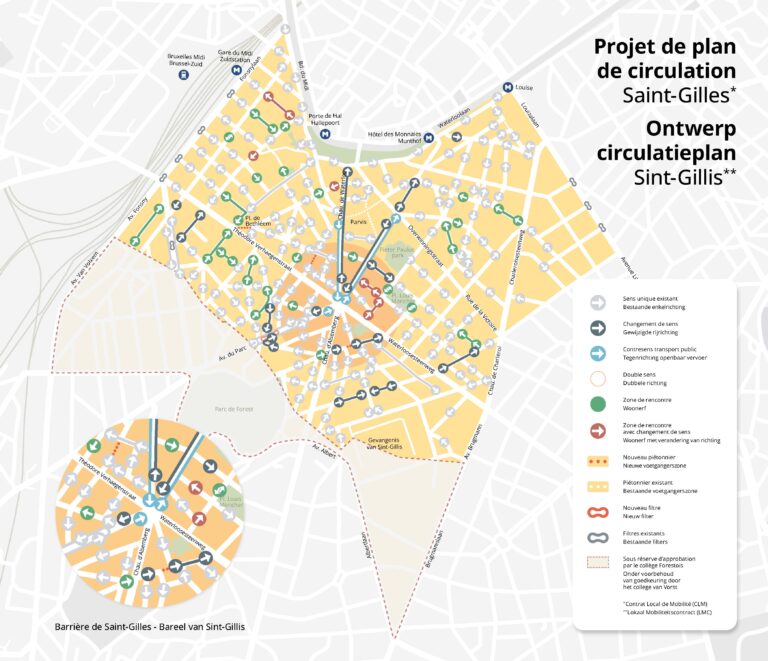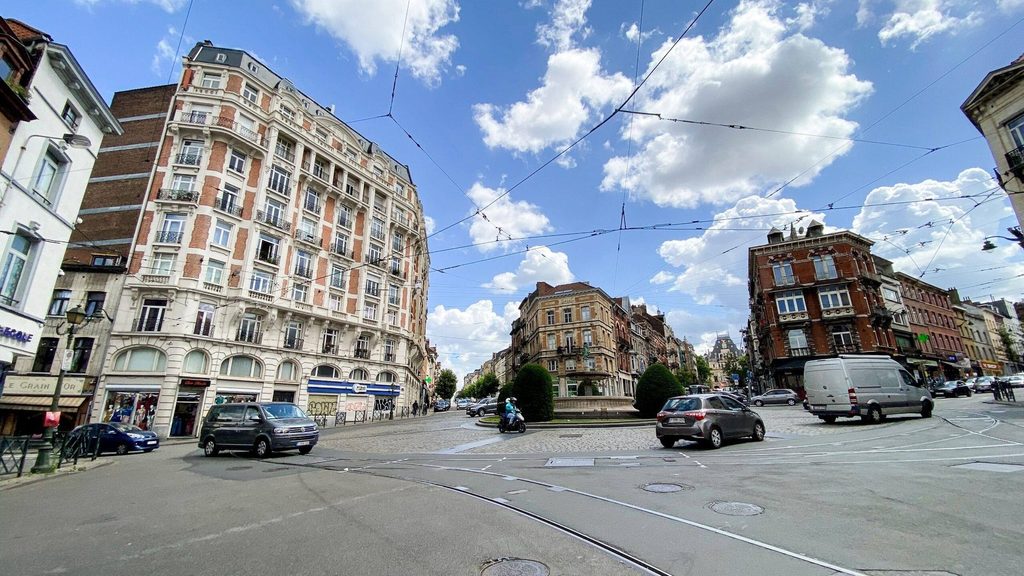After what was a long road with numerous meetings and discussions, the Brussels municipality Saint-Gilles has now finally presented the first version of its new traffic circulation plan in the context of the regional Good Move mobility plan.
Since July last year, several Brussels municipalities have launched traffic circulation plans within the framework of the regional Good Move mobility plan – all aiming to exclude transit traffic from the residential areas.
However, these plans quickly encountered strong resistance, which led some municipalities to back down and retract their plans. Saint-Gilles did not even get around to announcing a plan in the first place, because Greens and Socialists were on different wavelengths.
Don't want a revolution
Now, 1.5 years before the municipal elections, the Saint-Gilles council is still launching a circulation plan – even if it does not use the controversial 'Good Move' anywhere in its communication. The most important changes will focus on the Barrière, a chaotic intersection in the centre of the municipality where seven different streets converge.
"We do not want a revolution. We want to focus on the social dimension," said Saint-Gilles Mayor Jean Spinette, adding that the plan will be implemented in phases. He also pointed to the €500,000 that the municipality allocates for bicycle premiums (electric or not) and driving licenses for professional drivers, among other things.

Credit: Municipality of Saint-Gilles
The new plan works with a number of one-way streets that should reduce the amount of through traffic in the municipality.
Car traffic coming from Hôtel des Monnaies will still be able to drive onto the Barrière, but this will no longer be possible in the opposite direction (except for public transport).
The lower part of the Chaussée de Waterloo will also be made into a one-way street, with car traffic in the direction of the Porte de Hal and public transport in the opposite direction.
Additionally, the Avenue du Parc will also become one-way, whereby car traffic in the direction of Forest will remain possible, but will no longer be able to pass through the narrower part of the street between Rue de la Perche and Barrière.
Related News
- 'Good Move is now taboo': What next for the Brussels mobility plan?
- 'No Good Move philosophy': Uccle to implement its own mobility plan
- Walking the walk: Brussels residents increasingly get around by foot
Another important change for the area is that, in a few years, the tram will be able to drive straight ahead, instead of making circles around the square. For this, however, the historic fountain with the water carrier will have to be moved slightly.
The circulation plan also includes parts of streets that will become pedestrianised, such as the Rue du Fort (with a test phase starting this summer), the street at the top of the Place de Bethléem, the Avenue Adolphe Demeur and the Place Van Meenen (in front of the town hall).
From the end of June, the parking spaces under the trees on the square will disappear. Only a few parking spaces close to the town hall itself will remain, including for deliveries. The lost parking spaces will be compensated near the prison.
"We expect the same benefits as in the Brussels city centre (Pentagon/Vijfhoek) and Schaerbeek: faster public transport, safer and healthier streets for pedestrians and cyclists and smoother local circulation by preventing through traffic," said Brussels Mobility Minister Elke Van den Brandt.
From September, another round of information and consultation will follow in the various districts of Saint-Gilles, as well as a part of Forest. The most important interventions will only be implemented in 2025, after the municipal elections.

